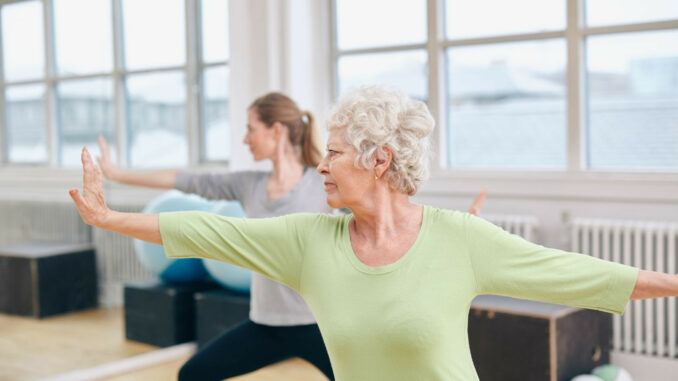
Introduction:
In the dynamic realm of fitness and well-being, the pursuit of the best types of exercise is a journey tailored to individual preferences, goals, and health considerations. This comprehensive guide explores a diverse range of exercises, each offering unique benefits for physical, mental, and emotional well-being. Whether you’re a seasoned fitness enthusiast or someone embarking on a wellness journey, discovering the best-suited exercises can be transformative. From strength training and cardiovascular activities to mind-body practices, this article navigates the landscape of exercise options, empowering individuals to craft a personalized and effective fitness regimen.
I. Strength Training:
- Weightlifting: Weightlifting, or resistance training, involves lifting weights to build strength, muscle mass, and bone density. It is an effective way to sculpt the body, boost metabolism, and enhance overall functional fitness.
- Bodyweight Exercises: Bodyweight exercises, such as push-ups, squats, and lunges, use the body’s own resistance for strength training. These exercises are versatile, requiring minimal equipment, making them accessible for individuals of all fitness levels.
- Resistance Bands: Resistance bands offer a portable and versatile option for strength training. They provide varying levels of resistance, making them suitable for beginners and advanced fitness enthusiasts alike.
- Functional Training: Functional training focuses on movements that mimic everyday activities. This type of exercise enhances overall functional fitness, promoting better posture, balance, and coordination.
II. Cardiovascular Exercise:
- Running and Jogging: Running and jogging are classic cardiovascular exercises that improve cardiovascular health, burn calories, and boost endurance. They can be done outdoors or on a treadmill, catering to individual preferences.
- Cycling: Whether on a stationary bike or cycling outdoors, this low-impact exercise provides an effective cardiovascular workout. Cycling strengthens the lower body, improves endurance, and is gentle on the joints.
- Swimming: Swimming is a full-body workout that engages multiple muscle groups while being easy on the joints. It improves cardiovascular health, enhances lung capacity, and offers a refreshing and low-impact exercise option.
- Jump Rope: Jumping rope is a simple yet highly effective cardiovascular exercise. It improves coordination, burns calories, and can be done virtually anywhere.
III. Flexibility and Mobility:
- Yoga: Yoga combines physical postures, breath control, and meditation to enhance flexibility, balance, and mental well-being. It offers a holistic approach to fitness, promoting relaxation and stress reduction.
- Pilates: Pilates focuses on core strength, flexibility, and overall body awareness. It emphasizes controlled movements and proper alignment, making it beneficial for improving posture and preventing injuries.
- Tai Chi: Tai Chi is an ancient Chinese practice that combines slow, flowing movements with deep breathing. It enhances flexibility, balance, and relaxation, making it particularly suitable for seniors.
- Static Stretching: Incorporating static stretches into a fitness routine helps improve flexibility and prevent injuries. These stretches involve holding a position to gently lengthen and elongate muscles.
IV. Mind-Body Practices:
- Meditation: Meditation promotes mental clarity, stress reduction, and emotional well-being. It can be practiced in various forms, including mindfulness meditation, guided meditation, or transcendental meditation.
- Mindful Movement (Qigong): Qigong combines gentle movements, breath control, and meditation to promote the flow of energy (qi) in the body. It is a holistic practice that enhances both physical and mental well-being.
- Dance: Dance is a joyful and expressive form of exercise that engages the body and mind. Whether through formal dance classes or freestyle movement, dancing promotes cardiovascular health and emotional expression.
- Breathing Exercises: Focused breathing exercises, such as diaphragmatic breathing or pranayama, can have profound effects on stress reduction, relaxation, and overall mental well-being.
V. High-Intensity Interval Training (HIIT):
- Short Bursts of Intense Exercise: HIIT involves alternating short bursts of intense exercise with periods of rest or lower-intensity activity. It is a time-efficient way to burn calories, improve cardiovascular health, and boost metabolism.
- Tabata Training: Tabata is a specific form of HIIT that involves 20 seconds of intense exercise followed by 10 seconds of rest, repeated for four minutes. It is known for its efficiency and effectiveness in improving both aerobic and anaerobic fitness.
- Circuit Training: Circuit training combines strength and cardiovascular exercises in a sequence, often with minimal rest between exercises. It provides a comprehensive full-body workout in a condensed timeframe.
Conclusion:
Selecting the best types of exercise is a personal and evolving journey, shaped by individual preferences, goals, and health considerations. The diverse range of exercises presented in this guide offers a holistic approach to fitness, addressing physical, mental, and emotional well-being. Whether one’s focus is on strength training, cardiovascular exercise, flexibility, or mind-body practices, the key is to find a balanced and sustainable fitness regimen. Ultimately, the most effective exercise is the one that brings joy, fulfillment, and lasting health benefits. As individuals embark on their fitness journeys, the tapestry of exercise options empowers them to craft a vibrant and personalized approach to well-being – a journey that celebrates the unique and dynamic essence of each individual.